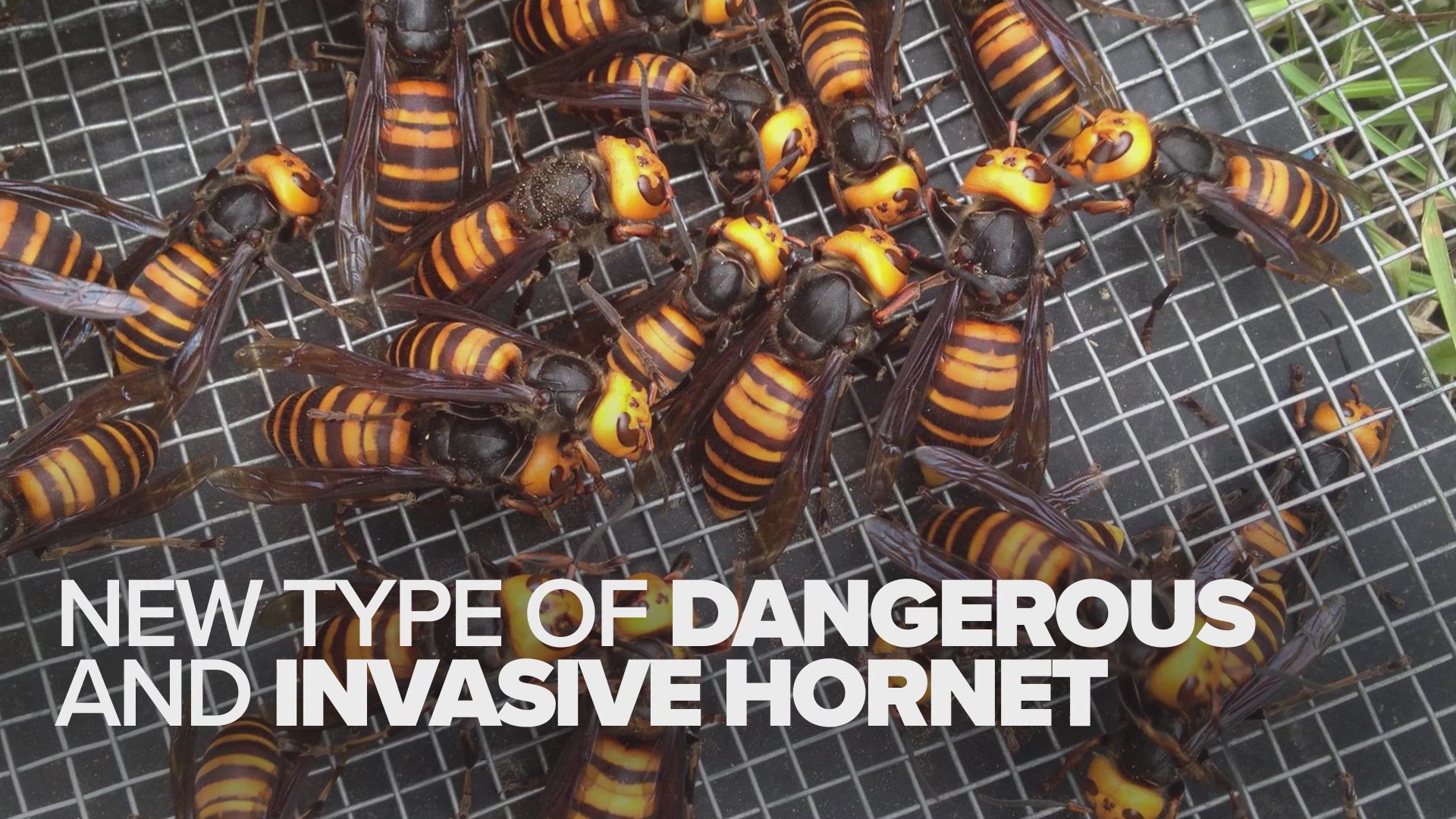BIRCH BAY, Wash. — The first Asian giant hornet to be trapped in Washington state was found near Birch Bay earlier this month.
The hornet was found in a bottle trap on July 14, according to the Washington State Department of Agriculture. It was positively identified as an Asian giant hornet on July 29. It will be tested at a lab in DC, but WSDA believes it to be a worker, not a queen.
The state’s five previous confirmed sightings were found in the environment, not traps. Two of the five were queens. This latest detection was about 6 miles from the first in the U.S. found late last year near Blaine.
“This is encouraging because it means we know that the traps work,” said Sven Spichiger, managing entomologist for the department. “But it also means we have work to do.”
He said if it is a worker hornet, it implies a nest has established nearby. The state is moving forward under that assumption for now.
The department's next steps are to search for nests using infrared cameras and place additional traps to catch live specimens. The department will tag the hornets and track them back to their colony, which will be eradicated. They've tested the tags on a smaller native species, and believe they're ready to try them on the Asian giant hornets.
Spichiger said trapping this hornet gives him hope the live traps will be successful too.
"You never really know if a trap is going to be effective in a new area because of competition from other things they just don't have in Japan and Korea, so it's always gratifying to know that you've selected the right tool," he said."And getting one in a trap, in the middle of nowhere if you will, is proof that the traps are effective at detecting these."
He did express some worry about tracking the hornets. Because they nest underground, the obstruction can cause the transmitter to lose signal. But they hope by tracking their path home they can still find the nest or nests.
People can build and set their own traps using bottles and a mixture of orange juice and rice cooking wine. Between WSDA, partners and citizen scientists, there are 1,844 traps set right now, Spichiger said. But it is a commitment —you must set them on your own property, submit weekly reports and maintain the contraption.
RELATED: Could praying mantises kill or control the Asian giant hornet population in Washington state?
The department hopes to destroy any hornet nests by mid-September or October — before the colony would begin reproducing queens and drones — to prevent the further spread of the invasive hornet.
They believe at least one nest made it through last winter, capable of producing 200 to 300 queens. Still, Spichiger said there's still hope to stop the hornets from establishing a foothold in the U.S.
Prior to trapping its first hornet, the last confirmed sighting was in Bellingham on June 11, 2020.
Asian giant hornets attack beehives for protein and can grow up to two inches long, making them easily distinguishable from smaller bees and hornets. Their active season starts in April and runs through early summer/early fall when they become most destructive to honey bee populations.
More than 2,000 potential sightings of the invasive hornets were reported to the Washington State Department of Agriculture over several months. Almost all of them turned out to be false reports.
The insects most commonly confused for Asian giant hornets are bald-faced hornets, yellow jackets, bumblebees and ten-lined beetles.
People who believe they've seen the hornets are asked to contact the Department of Agriculture. They ask you to exercise extreme caution if you see one — their stingers are longer than native bees and hornets, they can sting repeatedly, and their venom is more toxic.


